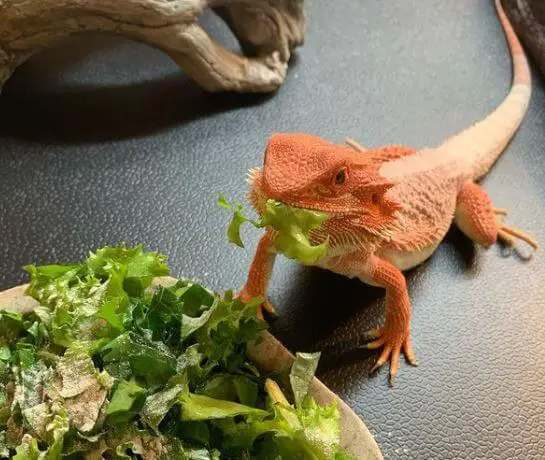How often to feed a bearded dragon
Astonishing Companions: A Brief Overview of Bearded Dragons as Pets
How often to feed a bearded dragon: Have you ever longed for a captivating pet that combines an otherworldly appearance with the grace of a wise sage? Look no further than the remarkable bearded dragon, a reptilian marvel renowned for its unique charm and gentle temperament. Native to the arid regions of Australia, these captivating creatures have found their way into the hearts and homes of reptile enthusiasts worldwide.
With their distinctive flattened bodies adorned with spiky scales, prominent triangular heads, and, as their name suggests, magnificent “beards” made of expandable skin folds beneath their chins, they effortlessly attract attention wherever they go. Bearded dragons (Pogona vitticeps) have become increasingly popular pets in recent years due to their moderate size, manageable care requirements, and endearing personalities.
These diurnal creatures are highly adaptable and can thrive in various enclosures ranging from vivariums to custom-built habitats. They possess a remarkable ability to bond with their human caretakers when provided with adequate attention and care.
A Feast Fit for Royalty: The Importance of Proper Feeding Schedule for Their Health and Well-being
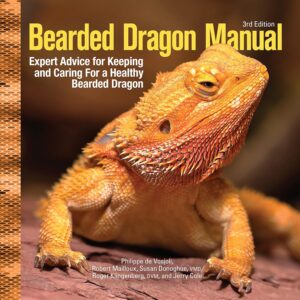 Feeding is not merely a mundane activity that sustains life; it is an art that nourishes both body and mind. For bearded dragons, establishing an appropriate feeding schedule is essential for promoting optimal health, longevity, and overall well-being.
Feeding is not merely a mundane activity that sustains life; it is an art that nourishes both body and mind. For bearded dragons, establishing an appropriate feeding schedule is essential for promoting optimal health, longevity, and overall well-being.
As omnivorous reptiles with specific dietary needs, maintaining a balanced nutritional intake plays a pivotal role in ensuring their physical development and physiological functions remain in harmonious equilibrium. Similar to any responsible guardian who takes great care in nourishing their beloved companion’s soul through delectable sustenance, providing your scaly friend with meals at appropriate intervals holds tremendous significance.
By adhering to a well-thought-out feeding regime, you not only help your bearded dragon flourish physically but also foster a sense of security and contentment within its reptilian soul. Indeed, the right feeding schedule serves as an anchor that keeps these majestic creatures grounded amidst the chaos of daily existence.
Through this in-depth exploration of bearded dragon dietary requirements, we shall delve into the intricacies of age-specific feeding guidelines and discuss how they evolve as these majestic reptiles progress from hatchlings to juveniles and eventually reach adulthood. It is our hope that by uncovering these secrets, you will embark on a journey where both the physical and emotional nourishment of your bearded dragon is elevated to unprecedented heights.
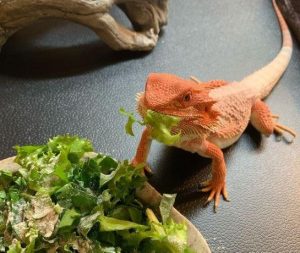
General Feeding Guidelines for How Often to Feed a Bearded Dragon
Age-specific feeding requirements
Bearded dragons have distinct dietary needs that vary depending on their age. Understanding these age-specific feeding requirements is crucial for their overall health and development. Let’s delve into the different stages of a bearded dragon’s life and their corresponding feeding guidelines.
Hatchlings (0-3 months)
During the first three months of a bearded dragon’s life, known as the hatchling stage, proper nutrition is paramount to support their rapid growth and development. Hatchlings should be fed daily to ensure they receive enough nutrients to thrive. Their diet primarily consists of small-sized insects such as pinhead crickets or small dubia roaches, which are easier for them to consume.
In addition to insects, fresh greens should also be available at all times in a separate dish to encourage early acceptance of vegetables. To promote optimal bone growth, it is important to dust the insects with calcium supplementation every other day and provide them with a multivitamin once a week.
Juveniles (3-12 months)
As bearded dragons transition from hatchlings into juveniles, their dietary requirements evolve accordingly. During this stage, daily feedings gradually decrease in frequency while focusing on providing sufficient nutrients for continued growth.
Juveniles can be offered appropriately sized insects once or twice a day, such as small crickets or medium-sized dubia roaches. Alongside the insect component, it becomes increasingly important to incorporate more vegetables into their diet slowly.
Vegetables like collard greens, mustard greens, and squash can provide essential vitamins and minerals necessary for their well-being. Calcium supplementation should continue every other day with a weekly multivitamin serving.
Adults (1 year and older)
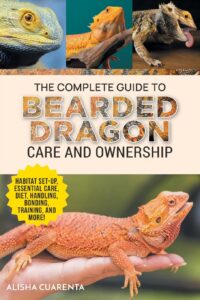 Once bearded dragons reach adulthood at around one year of age, their feeding frequency decreases further to accommodate their slower metabolism. At this stage, feeding them every other day or three times per week is generally sufficient to meet their nutritional needs. Insects should make up about 25% of their diet, with the remainder consisting of a variety of vegetables and occasional fruits.
Once bearded dragons reach adulthood at around one year of age, their feeding frequency decreases further to accommodate their slower metabolism. At this stage, feeding them every other day or three times per week is generally sufficient to meet their nutritional needs. Insects should make up about 25% of their diet, with the remainder consisting of a variety of vegetables and occasional fruits.
Adult bearded dragons benefit from a more balanced diet that includes leafy greens like kale and dandelion greens alongside other vegetables such as carrots and bell peppers. Calcium supplementation should continue every other day, while a multivitamin can be offered once a week to ensure they receive all the necessary vitamins and minerals for optimal health.
Nutritional needs and dietary considerations: How often to feed a bearded dragon
A balanced diet is crucial for the overall health and vitality of bearded dragons. Their diet should consist of a combination of insects, vegetables, and fruits to provide them with the necessary nutrients.
Insects serve as an important source of protein for growth and muscle development, while vegetables supply vitamins and minerals essential for various bodily functions. Bearded dragons can enjoy a wide range of insects including crickets, mealworms, dubia roaches, waxworms, or silkworms.
However, it is crucial to ensure that these insects are gut-loaded (fed nutritious foods) or dusted with calcium powder before offering them to your reptile friend. In addition to insects and vegetables, bearded dragons can also consume certain fruits in moderation as occasional treats due to their high sugar content.
Suitable fruit options include berries (such as blueberries or raspberries), melons (like watermelon or cantaloupe), apples (without seeds), or papayas. It is important to note that fruits should only make up a small portion of their diet due to the high sugar content which may contribute to obesity if consumed excessively.
To maintain proper bone health in bearded dragons, calcium supplementation is essential throughout their lives. Calcium powder can be dusted onto insects or sprinkled onto vegetables before offering them to your pet.
Additionally, providing a shallow dish of calcium powder separately in their enclosure allows them to self-regulate and supplement as needed. By adhering to these general feeding guidelines and ensuring a balanced diet, you can provide your bearded dragon with the necessary nutrition for optimal growth, development, and lifelong health.
Hatchlings (0-3 months)
During the hatchling stage, bearded dragons require daily feedings to support their rapid growth and development. It is crucial to provide them with a well-balanced diet that consists of small-sized insects, such as pinhead crickets or small dubia roaches. These insects should be offered twice a day to meet their high energy demands.
Additionally, fresh greens should be available at all times in a separate dish for hatchlings to munch on whenever they desire. To ensure optimal nutrition, it is important to regularly supplement the insects with calcium and vitamins.
Dusting the insects with a calcium supplement every other day helps maintain proper bone health and prevents metabolic bone disease. Alongside this, offering a multivitamin once a week ensures that the hatchlings receive all the necessary vitamins and minerals for their overall well-being.
Juveniles (3-12 months)
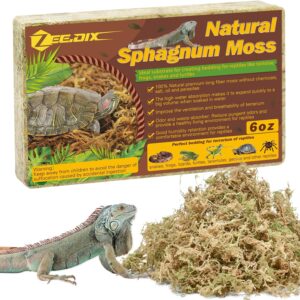 As bearded dragons transition into their juvenile stage, their feeding frequency gradually decreases, but still remains relatively frequent. Daily feedings are still recommended during this phase; however, they can slowly transition to fewer meals per day compared to hatchlings.
As bearded dragons transition into their juvenile stage, their feeding frequency gradually decreases, but still remains relatively frequent. Daily feedings are still recommended during this phase; however, they can slowly transition to fewer meals per day compared to hatchlings.
Offering appropriately sized insects once or twice a day, such as small crickets or medium-sized dubia roaches, provides them with sufficient protein intake. Alongside insect consumption, it is vital to introduce more vegetables into their diet during the juvenile stage.
Increasing the vegetable portion serves as an essential source of fiber and necessary nutrients for proper digestion and growth. Calcium supplementation every other day should also continue during this stage to support healthy bone development.
Adults (1 year and older)
Once bearded dragons reach adulthood (1 year and older), their feeding frequency decreases further due to their slower metabolism rate. Feeding adult bearded dragons every other day or three times per week is generally sufficient to maintain their health.
This reduced feeding frequency accommodates their lower energy needs and helps prevent obesity. While adult bearded dragons require less frequent meals, it is still crucial to ensure a well-balanced diet.
Insects should make up about 25% of their diet, with the remaining 75% consisting of vegetables and occasional fruits as treats. This ratio provides them with adequate nutrients while preventing excessive protein intake, which can strain their kidneys.
To sum up how often to feed a bearded dragon
Understanding the appropriate frequency of feeding for bearded dragons at different life stages is key to ensuring their overall health and well-being. Hatchlings require daily feedings with small-sized insects to support their rapid growth, alongside calcium and vitamin supplementation. Juveniles still benefit from daily feedings but can gradually transition to fewer meals per day while increasing their vegetable intake.
Adult bearded dragons have a slower metabolism, hence feeding them every other day or three times per week is sufficient, while maintaining a proper insect-to-vegetable ratio in their diet. By adhering to these guidelines and providing a balanced diet tailored to each life stage, you can foster the optimal growth and vitality of your beloved bearded dragon companion.
Remember to consult with a reptile veterinarian for any specific dietary concerns or further guidance on the best feeding practices for your pet. Embrace this journey of nurturing your scaly friend and witness the joy they bring as they thrive under your care!
Further Reading:
- Carolina Custom Cages Terrarium Review
- 8 Best Basking Rocks for Beardie: What Is the Best Choice?
- 10 Best Thermometers for Beardie: How to Choose the Best One?
- 5 Best Beardie Lighting Setups for Beardie Lovers
- 9 Best Heat Lamps for Beardie: Natural Habitat Provided


